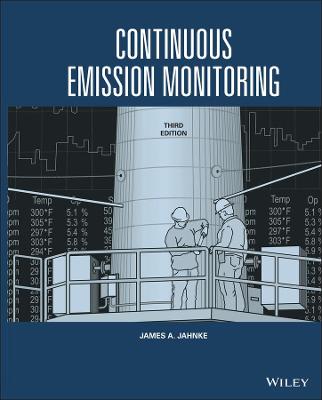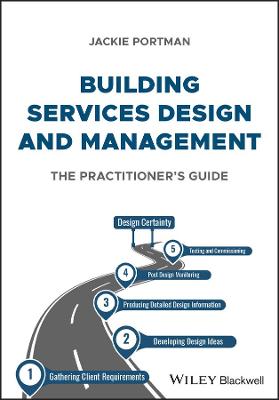BIM for Design Coordination
 -15%
portes grátis
-15%
portes grátis
BIM for Design Coordination
A Virtual Design and Construction Guide for Designers, General Contractors, and MEP Subcontractors
Leite, Fernanda L.
John Wiley & Sons Inc
12/2019
192
Mole
Inglês
9781119516019
15 a 20 dias
474
Acknowledgements xiii
About the Author xv
1 Introduction 1
Structure of This Book 3
Chapter 2: Setting Up the Project for Success 3
Chapter 3: Model Quality 3
Chapter 4: Carrying Out a Successful Design Coordination Session 4
Chapter 5: Specific Guidelines for General Contractors (GCs) and the VDC Coordination Team 4
Chapter 6: Specific Guidelines for Architects and Engineers 4
Chapter 7: Specific Guidelines for Subcontractors and Fabricators 5
Chapter 8: BIM-Based Design Coordination in Other Industry Sectors 5
Chapter 9: BIM Teaching Considerations 5
Chapter 10: What the Future Holds for Design Coordination 5
2 Setting Up the Project for Success 7
2.0 Executive Summary 7
2.1 Introduction 8
2.2 Owner's Role 8
2.3 BIM Project Execution Plan 11
2.4 Design Coordination Team Composition and Skills 12
2.5 Federated Model Example 14
2.6 Summary and Discussion Points 16
Appendix 18
3 Model Quality 37
3.0 Executive Summary 37
3.1 Introduction 38
3.2 Analysis of Modeling Effort and Impact of Different Levels of BIM Detail 38
3.2.1 Project 1 38
3.2.2 Project 2 40
3.2.3 Description of Performed Analyses 41
3.2.4 Results from Leite et al. (2011) LOD Study 43
3.3 Conclusions from the Leite et al. (2011) LOD Study 49
3.4 Model Quality Assurance Guidelines 50
3.4.1 LOD Requirements 51
3.5 Summary and Discussion Points 53
4 Carrying Out a Successful Design Coordination Session 55
4.0 Executive Summary 55
4.1 Introduction 55
4.2 Traits of an Effective Design Coordination Moderator 56
4.3 Design Coordination Workflow 57
4.3.1 3D Modeling 57
4.3.2 Internal Coordination 58
4.3.3 Clash Detection 59
4.4 Characteristics of a Successful Design Coordination Session 66
4.5 Summary and Discussion Points 67
5 Specific Guidelines for General Contractors and the VDC Coordination Team 69
5.0 Executive Summary 69
5.1 Introduction 70
5.2 Role of the VDC Coordinator in the Design Coordination Process 70
5.3 Interfacing with Other Stakeholders 77
5.3.1 Owner 77
5.3.2 Designers 77
5.3.3 Subcontractors 78
5.4 Case Study: Academic Building in the Southern United States 78
5.5 Summary and Discussion Points 82
6 Specific Guidelines for Architects and Engineers 85
6.0 Executive Summary 85
6.1 Introduction 86
6.2 Role of Designers in the Design Coordination Process 88
6.2.1 Generating the Design Model (e.g., Architectural, Structural) 88
6.2.2 Updating the Model with Design Changes 89
6.2.3 Point of Contact for BIM Issues Related to Design 89
6.3 Interfacing with Other Stakeholders 89
6.3.1 Owner 89
6.3.2 General Contractor 90
6.3.3 Subcontractors 90
6.4 Case Study: Facility Expansion Project 90
6.4.1 Current Practice of the Constructability Review 91
6.4.2 Construction Model Development 92
6.4.3 Model-Based Design Review Process 95
6.5 Summary and Discussion Points 98
7 Specific Guidelines for Subcontractors and Fabricators 101
7.0 Executive Summary 101
7.1 Introduction 102
7.2 Role of Subcontractors and Fabricators in the Design Coordination Process 102
7.2.1 Generating the Respective Trade Model 104
7.2.2 Attending Weekly Design Coordination Sessions and Following Model Development and Submission Requirements Established in the BIM PxP 105
7.2.3 Ensuring Comprehensive Model Coordination between Trades 105
7.2.4 Updating the Model During the Construction Phase 105
7.2.5 Producing Shop Drawings from the Coordinated Model 105
7.2.6 Installing Work Based on the Coordinated Construction Model 105
7.3 Interfacing with Other Stakeholders 106
7.3.1 General Contractor 107
7.3.2 Other Subcontractors 108
7.3.3 Designers 108
7.3.4 Owner 108
7.4 Case Study: Academic Building 108
7.5 Summary and Discussion Points 113
8 BIM-Based Design Coordination in Other Industry Sectors 115
8.0 Executive Summary 115
8.1 Introduction 115
8.2 BIM-Based Design Coordination and Fields in Infrastructure Projects 116
8.2.1 Case Study: White River Bridge Project 117
8.2.2 Case Study: Reconstruction of an Interchange 121
8.3 BIM-Based Design Coordination in Industrial Projects 122
8.3.1 Case Study: Refinery Upgrade Project 125
8.4 Summary and Discussion Points 126
9 BIM Teaching Considerations 129
9.0 Executive Summary 129
9.1 Introduction 130
9.2 Background Research 130
9.3 Course Description 132
9.4 Course Overview and Learning Objectives 133
9.5 Course Organization and Educational Modules 133
9.6 Example Educational Module: Design Coordination 135
9.6.1 Statement of Alignment to Course Learning Objectives 135
9.6.2 Lecture 136
9.6.3 Hands-On Sessions 136
9.6.4 Assignment Description 136
9.7 Industry Involvement 139
9.8 Lessons Learned 141
9.9 Summary and Discussion Points 142
10 What the Future Holds for Design Coordination 145
10.0 Executive Summary 145
10.1 Introduction 146
10.2 Emerging Technologies for Design Coordination 147
10.2.1 Virtual, Augmented, and Mixed Reality 148
10.2.2 Artificial Intelligence in Support of Automated Design Coordination 148
10.2.3 Computer Vision and Deep Learning in Support of Automated Model Updates 152
10.3 Digital Transformation of the AECFM Industry 155
10.4 Summary and Discussion Points 156
Index 159
Acknowledgements xiii
About the Author xv
1 Introduction 1
Structure of This Book 3
Chapter 2: Setting Up the Project for Success 3
Chapter 3: Model Quality 3
Chapter 4: Carrying Out a Successful Design Coordination Session 4
Chapter 5: Specific Guidelines for General Contractors (GCs) and the VDC Coordination Team 4
Chapter 6: Specific Guidelines for Architects and Engineers 4
Chapter 7: Specific Guidelines for Subcontractors and Fabricators 5
Chapter 8: BIM-Based Design Coordination in Other Industry Sectors 5
Chapter 9: BIM Teaching Considerations 5
Chapter 10: What the Future Holds for Design Coordination 5
2 Setting Up the Project for Success 7
2.0 Executive Summary 7
2.1 Introduction 8
2.2 Owner's Role 8
2.3 BIM Project Execution Plan 11
2.4 Design Coordination Team Composition and Skills 12
2.5 Federated Model Example 14
2.6 Summary and Discussion Points 16
Appendix 18
3 Model Quality 37
3.0 Executive Summary 37
3.1 Introduction 38
3.2 Analysis of Modeling Effort and Impact of Different Levels of BIM Detail 38
3.2.1 Project 1 38
3.2.2 Project 2 40
3.2.3 Description of Performed Analyses 41
3.2.4 Results from Leite et al. (2011) LOD Study 43
3.3 Conclusions from the Leite et al. (2011) LOD Study 49
3.4 Model Quality Assurance Guidelines 50
3.4.1 LOD Requirements 51
3.5 Summary and Discussion Points 53
4 Carrying Out a Successful Design Coordination Session 55
4.0 Executive Summary 55
4.1 Introduction 55
4.2 Traits of an Effective Design Coordination Moderator 56
4.3 Design Coordination Workflow 57
4.3.1 3D Modeling 57
4.3.2 Internal Coordination 58
4.3.3 Clash Detection 59
4.4 Characteristics of a Successful Design Coordination Session 66
4.5 Summary and Discussion Points 67
5 Specific Guidelines for General Contractors and the VDC Coordination Team 69
5.0 Executive Summary 69
5.1 Introduction 70
5.2 Role of the VDC Coordinator in the Design Coordination Process 70
5.3 Interfacing with Other Stakeholders 77
5.3.1 Owner 77
5.3.2 Designers 77
5.3.3 Subcontractors 78
5.4 Case Study: Academic Building in the Southern United States 78
5.5 Summary and Discussion Points 82
6 Specific Guidelines for Architects and Engineers 85
6.0 Executive Summary 85
6.1 Introduction 86
6.2 Role of Designers in the Design Coordination Process 88
6.2.1 Generating the Design Model (e.g., Architectural, Structural) 88
6.2.2 Updating the Model with Design Changes 89
6.2.3 Point of Contact for BIM Issues Related to Design 89
6.3 Interfacing with Other Stakeholders 89
6.3.1 Owner 89
6.3.2 General Contractor 90
6.3.3 Subcontractors 90
6.4 Case Study: Facility Expansion Project 90
6.4.1 Current Practice of the Constructability Review 91
6.4.2 Construction Model Development 92
6.4.3 Model-Based Design Review Process 95
6.5 Summary and Discussion Points 98
7 Specific Guidelines for Subcontractors and Fabricators 101
7.0 Executive Summary 101
7.1 Introduction 102
7.2 Role of Subcontractors and Fabricators in the Design Coordination Process 102
7.2.1 Generating the Respective Trade Model 104
7.2.2 Attending Weekly Design Coordination Sessions and Following Model Development and Submission Requirements Established in the BIM PxP 105
7.2.3 Ensuring Comprehensive Model Coordination between Trades 105
7.2.4 Updating the Model During the Construction Phase 105
7.2.5 Producing Shop Drawings from the Coordinated Model 105
7.2.6 Installing Work Based on the Coordinated Construction Model 105
7.3 Interfacing with Other Stakeholders 106
7.3.1 General Contractor 107
7.3.2 Other Subcontractors 108
7.3.3 Designers 108
7.3.4 Owner 108
7.4 Case Study: Academic Building 108
7.5 Summary and Discussion Points 113
8 BIM-Based Design Coordination in Other Industry Sectors 115
8.0 Executive Summary 115
8.1 Introduction 115
8.2 BIM-Based Design Coordination and Fields in Infrastructure Projects 116
8.2.1 Case Study: White River Bridge Project 117
8.2.2 Case Study: Reconstruction of an Interchange 121
8.3 BIM-Based Design Coordination in Industrial Projects 122
8.3.1 Case Study: Refinery Upgrade Project 125
8.4 Summary and Discussion Points 126
9 BIM Teaching Considerations 129
9.0 Executive Summary 129
9.1 Introduction 130
9.2 Background Research 130
9.3 Course Description 132
9.4 Course Overview and Learning Objectives 133
9.5 Course Organization and Educational Modules 133
9.6 Example Educational Module: Design Coordination 135
9.6.1 Statement of Alignment to Course Learning Objectives 135
9.6.2 Lecture 136
9.6.3 Hands-On Sessions 136
9.6.4 Assignment Description 136
9.7 Industry Involvement 139
9.8 Lessons Learned 141
9.9 Summary and Discussion Points 142
10 What the Future Holds for Design Coordination 145
10.0 Executive Summary 145
10.1 Introduction 146
10.2 Emerging Technologies for Design Coordination 147
10.2.1 Virtual, Augmented, and Mixed Reality 148
10.2.2 Artificial Intelligence in Support of Automated Design Coordination 148
10.2.3 Computer Vision and Deep Learning in Support of Automated Model Updates 152
10.3 Digital Transformation of the AECFM Industry 155
10.4 Summary and Discussion Points 156
Index 159
















